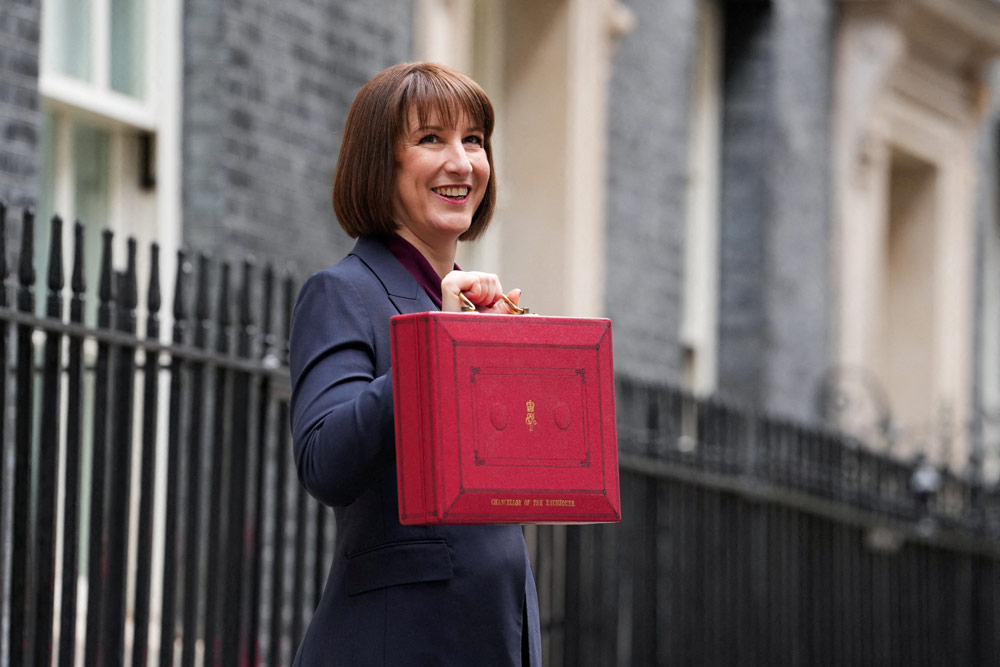The U.K.’s Spring Statement, set to be delivered today at 12:30 p.m. London time by Finance Minister Rachel Reeves, comes at a critical juncture for the British economy. As the Labour government faces mounting economic challenges, including stagnating growth, persistent inflation, and rising borrowing costs, Reeves is expected to outline her updated spending and taxation plans in Parliament.
This statement will also coincide with the latest economic forecasts from the Office for Budget Responsibility (OBR), which are anticipated to reflect a downgraded growth outlook for the U.K. for 2025, raising further questions about the government’s fiscal strategy.
What Is the Spring Statement?
The Spring Statement is a mid-year fiscal event where the Chancellor updates lawmakers on the government’s economic and fiscal position, providing a snapshot of public finances and outlining adjustments to spending or taxation plans. Today’s statement is expected to address the erosion of fiscal “headroom” caused by increased borrowing costs and economic underperformance.
Reeves has committed to adhering to the “fiscal rules” outlined in the Autumn Budget of October 2024, which aim to ensure government day-to-day spending is covered by tax revenues and that public debt decreases as a share of economic output by 2029-2030. However, the worsening economic backdrop has made this commitment increasingly challenging.
Key Announcements Expected
Spending Cuts
Reeves is expected to announce approximately £10 billion in spending cuts to address rising borrowing requirements and maintain compliance with her fiscal rules. The cuts will likely target welfare spending, with £5 billion already flagged for reductions, as well as administrative cost savings in the Civil Service, which are expected to shrink headcount by 15% by 2030.
Barclays analysts have suggested that these spending cuts will be “back-loaded,” meaning they will take effect in the latter half of the parliamentary term, beyond 2027.
Defense Spending
In a significant policy move, Reeves is set to unveil additional defense spending, bringing the U.K. closer to allocating 2.5% of its GDP to national defense. A £2.2 billion funding boost is expected for next year, reflecting the government’s focus on security in a “changing world.”
Economic Growth and Fiscal Policy
The U.K.’s economic growth forecast for 2025 is expected to be halved by the OBR, dropping from a previous estimate of 2% to just 1%. This will exacerbate the government’s borrowing needs and place further pressure on Reeves to find savings or new revenue sources.
The Treasury has already ruled out major new tax increases for now, following the controversial tax hikes in last October’s budget. However, analysts warn that further levies could be introduced later in 2025 to address fiscal gaps.
Relief for Employers
There may be some relief for businesses, potentially in the form of adjustments to the national insurance contributions raised last year. Any such measures would aim to ease the financial burden on employers while still adhering to fiscal rules.
Challenges Ahead
Economic analysts have pointed out that Reeves’ fiscal headroom has been significantly reduced since her Autumn Budget. Higher gilt yields—up by 20-40 basis points since October—have contributed to structural pressures on public borrowing. Meanwhile, sluggish economic growth and cyclical revenue shortfalls are further complicating the government’s ability to meet its fiscal targets.
The Labour government is also contending with criticism from industry leaders, who argue that last year’s tax increases have dampened investment and job creation. While Reeves has defended those measures as necessary for bolstering public services, she now faces the dual challenge of stimulating growth while maintaining fiscal discipline.











